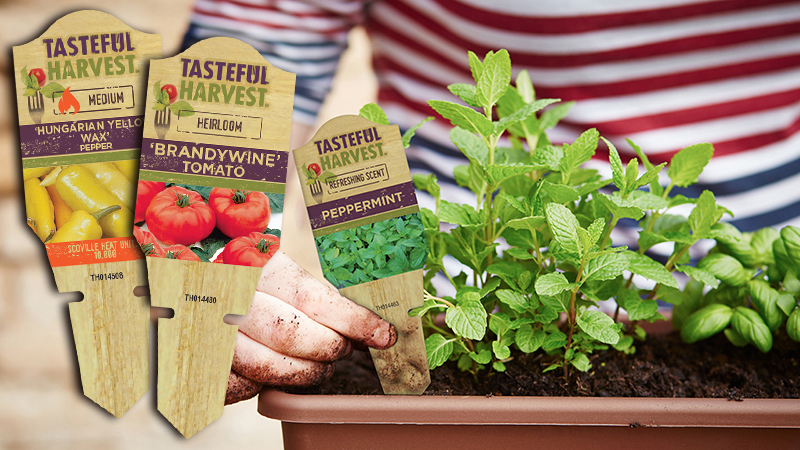An Update on Protected Agriculture Technology For Vegetable Growing

An AmHydro channel transport cart is shown above: Photo: Joe Swartz/AmHydro
Sifting and sorting the proven tech from the hype in the protected agriculture arena can be daunting. We looked at what systems are being installed and talked to some experts to get their take on top tech for indoor vegetable growers.
Upgraded Lighting Systems
It likely comes as no surprise that lighting systems are discussed in nearly every technology article. For years, high-pressure sodium lighting was the solution to crop lighting needs. The increasing affordability of LED lights and new ways to use them change the equation.
“The industry is understanding better and better how to manage lighting without overlighting,” says Joe Swartz, Vice President of AmHydro, a leading controlled-environment agriculture (CEA) technology company.
Swartz explains that large-scale and small-scale growers are getting on board, utilizing the dynamic abilities of modern LED lighting to provide the right spectrum and the right daily light integral (DLI) at an economically viable threshold. The benefits can be more than a higher yield — a longer production season is also possible.
“For peppers, with dynamic LED lighting, we see a much healthier crop as well as Canada’s first successful winter pepper crop,” says Rose Séguin, Agronomist at Sollum Technologies. “For microgreens, we’ve seen cycle times reduced by one to two weeks, which is quite major as those are quick crops.”
These growers know off-season locally grown crops can take advantage of premium pricing while providing their buyers with a more consistent supply.
Horticultural LED lighting in the past was narrow-spectrum, typically only red and blue. Today’s tech is broad-spectrum, including blue through red and even far-red.
“The advantage of dynamic broad-spectrum lighting is that as a grower, I can adapt my lighting according to crop morphology and my production objectives,” Séguin says. “It gives me the power to basically provide the sunlight spectrum that the plants adapted to, but then tweak it based on your observations and objectives. It makes for a lighting strategy that is led by nature and adapted by the grower.”
Material Handling Systems
Whether it’s trays, pallets, seeds, transplants, or harvested products, many hand touches are potentially occurring in an indoor vegetable farming environment. Swartz says that labor supply and costs, worker safety, and food safety all make convincing arguments driving producers to look toward tech in this area. Many of these systems have been around in some form for decades, like monorails, packaging systems, transplanters, and seeders.
Graeme Dergousoff, General Manager at Bellpark Automation Solutions, says the vast majority of inquiries he receives about automation tech relate to scarcity — whether it’s the power grid, water, general labor, or skilled labor. Common areas indoor vegetable growers are considering for automation or upgrades are sorting/grading post-harvest and gaining efficiencies in the propagation pipeline.
Many machines and tools being brought into play in protected vegetable farming have already been used in the ornamental industry. Examples of automation tech germane to vine and vegetable growers include transport systems, soil and filling mechanisms, tray and pot fillers, seeders, and transplanters.
New seeders can handle multiple seed sizes with a change of the drum, making them more versatile and eliminating the need for multiple machines. With a 99% successful sowing yielding as high as 95% germination consistency, modern seeders can drive costs down.
“In a 406 tray, 99% accuracy is 402 out of 406 successful in approximately four seconds of work for a seeder,” Dergousoff says.
Biologicals
Predatory insects, mycorrhizal inoculants, and beneficial bacteria aren’t what we usually think of as tech, but their precise application is exactly that. These treatments are often protective rather than curative and have become popular with protected agriculture growers.
Products using Bacillus, Beauveria and Trichoderma are established and in use today by growers, says Tami Van Gaal, CEA Division Leader for Griffin Greenhouse Supplies. Van Gaal says these “soft chemistry” products differ from traditional, harsher methods and support a true integrated pest management (IPM) philosophy.
“We are going to see an explosion of microbials formulated as nutritional supplements, products that will enhance uptake and utility of nutrients or stimulate the plants’ natural defenses,” she says. “Many of these will be 25b-exempt.”
Data and AI
You don’t need the HAL 9000 (2001: A Space Odyssey) in a climate-controlled room to harness the power of AI for your vegetable growing operation.
In the greenhouse, AI enhances data collection, analysis, and optimization. Data can drive profitability, says Nick Genty, CEO of AgEye Technologies. With a high level of fidelity, limiting factors can be identified and addressed.
“Are you able to tell me the aggregate cost per plant to produce right now?” Genty asks.
Consider all factors, from media and seed to electricity (was this cycle different from the last one?), environmental controls, IPM costs, labor, pest and disease loss, inventory loss, and more. Most growers Genty talks to can’t identify the aggregate cost per plant to produce.
“Once you have that data,” Genty says, “we can look at specifics to solve problems and reduce actual costs, increase yield and revenue, or both.”
Machine vision and computer vision are remarkably adaptable to indoor vegetable growing operations both for fruit counting and early problem detection. Fruit counting includes the first onset of flowering to the number of fruits and even predicted crop weight at harvest. Aggregating that data can give you accurate predictions and improve scheduling efficiency. Early detection involves AI sifting through image data to recognize patterns of pest, disease, or nutrient deficiency, often much earlier than human scouts would and with greater accuracy.
Data science and AI in the vegetable arena are about quality control, consistency of yields, and maximizing economic efficiency. Highest yield and maximum economic efficiency may not occur at the same intersection, due to diminishing returns. Without data, growers may not know where their most profitable point exists.








